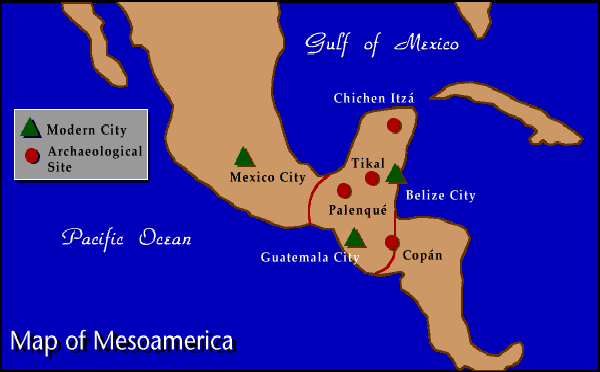

In the year 1523, Spanish Bishop Diego de Landa described the Maya ruins at Uxmal near the city of Merida. He also visited other abandoned temples, like those at Chichen Itza, and even described some intricate Maya hieroglyphs.
Even as he wrote, Maya civilization was vanishing into historical oblivion. Occasional reports of mysterious temples deep in the Central American rain forest surfaced from time to time, but they were ignored by the scientific world.
Maya civilization was rediscovered by John Lloyd Stephens and artist Frederick Catherwood in 1839.
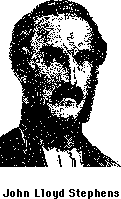
John Lloyd Stephens was a lawyer turned travel writer, who had achieved fame by describing his adventures in Egypt, Russia, and the Holy Land in the 1830's. Back in New York, he met Frederick Catherwood, a British architect with a gift for recording ancient ruins.
The two made a formidable team of writer and artist. When they heard rumors of ancient temples deep in the Central American rain forest, they saw a chance for a good story.
In 1839, the two men sailed for Belize and traveled into dense rain forest in search of ancient Maya temples.
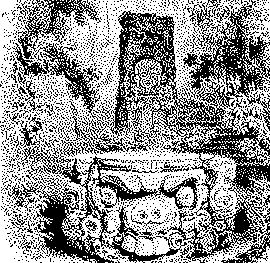
After an arduous journey on mule back, they eventually reached the ruins of Copán, one of the greatest Maya centers.
Stephens was electrified. He tried to buy Copán for $50, so he could ship it back to New York for exhibit. The owner was willing to sell, but fortunately for science there was no river nearby, no way of moving the artifacts and inscriptions. He had to be content with faithful copies.
"The City was desolate. No remnant of this race hangs around the
ruins, with the traditions handed down from father to son and from generation to
generation. It lay before us like a shattered bark in the midst of the ocean,
her masts gone, her name effaced, her crew perished, and none to tell whence she
came...the place where we were sitting, was it a citadel from which an unknown
people had sounded the trumpet of war? Or a temple for the worship of the God of
peace? Or did the inhabitants worship idols made with their own hands and offer
sacrifices to the stone before them? All was mystery, dark impenetrable mystery,
and every circumstance increased it...an immense forest shrouds the ruins,
hiding them from sight, heightening the impression and morel effect, and giving
an intensity and almost wildness to the interest."
-John Lloyd
Stephens' first impressions of Copán, 1839.
While Stephens wandered through Copán puzzling over the identity of the builders, Catherwood stood in the rain and mud, smothered with chiggers and mosquitoes, recording the intricate stelae, we now know to be histories and genealogical columns. His drawings were as accurate as a photograph.

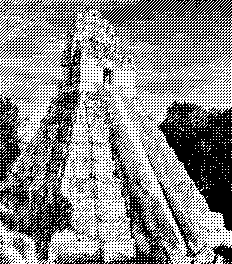
From Copán, the two intrepid travelers made their way to Palenqué, Guatemala, in the Yucatán, where they tried to record the Maya city, completely overgrown with dense forest. Palenqué was a complex of thick-walled rooms, courtyards, and pyramids, of buildings decorated with ³spirited figures in bas-relief,² and hieroglyphs.
It was here that Stephens realized that Maya civilization was quite different from that of the Ancient Egyptians or other Old World states.
John Lloyd Stephens on the origins of the Maya civilization (1839):
"We are not warranted in going back to any ancient nation of the
Old World for the builders of these cities: that they are not the work of people
who have passed away and whose history is lost, but that there are strong
reasons to believe them the creations of the same races who inhabited the
country at the time of the Spanish conquest, or of some not very distant
progenitors."
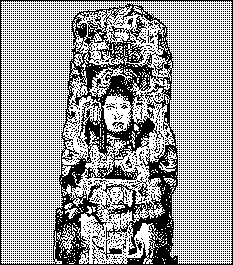
Stephens and Catherwood returned to New York, where the latter published his "Incidents of Travel in Central America, Chiapas, and the Yucatan " in 1841. The book was an immediate best seller, partly because Stephens told a good adventure story, and also because the Maya were so exotic.
Stephens not only pointed out that Maya civilization was indigenous, uninfluenced by Old World peoples, he also drew attention to the early Spanish archives in Central America that would reveal much information about Mesoamerican prehistory.
Stephens' book appeared two years before William Prescott, the Boston historian, published his immortal ³Conquest of Mexico ,² the first history of Pre-Columbian Mesoamerica that recounted some of the early history of the Maya, Toltec, and Aztecs, the indigenous states that flourished long before the Spanish Conquest.
Stephens and Catherwood returned to Maya country in 1842. They explored Uxmal, Chichen Itza, and other Maya sites. Again, they returned with brilliant drawings and vivid adventures. Their work established the Maya as a truly New World civilization.
All Maya archaeology since then has been based on the premise that this remarkable civilization was of native American inspiration and origin. In the same way, all American archaeology is based on the assumption, first put forward by Jesuit missionary Jose Acosta in 1589 -- that the first Americans crossed from Asia into North America, across the Bering Strait.